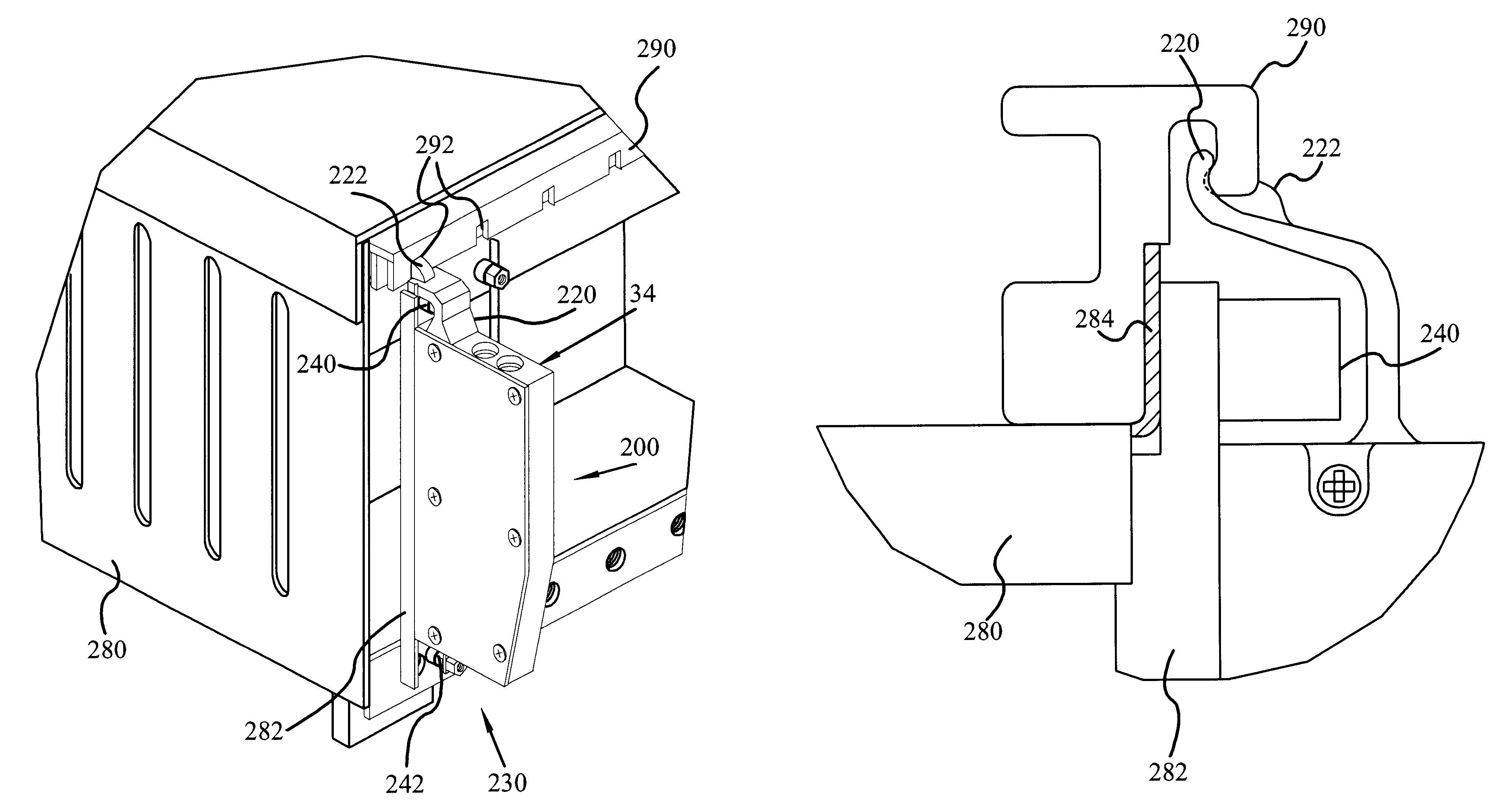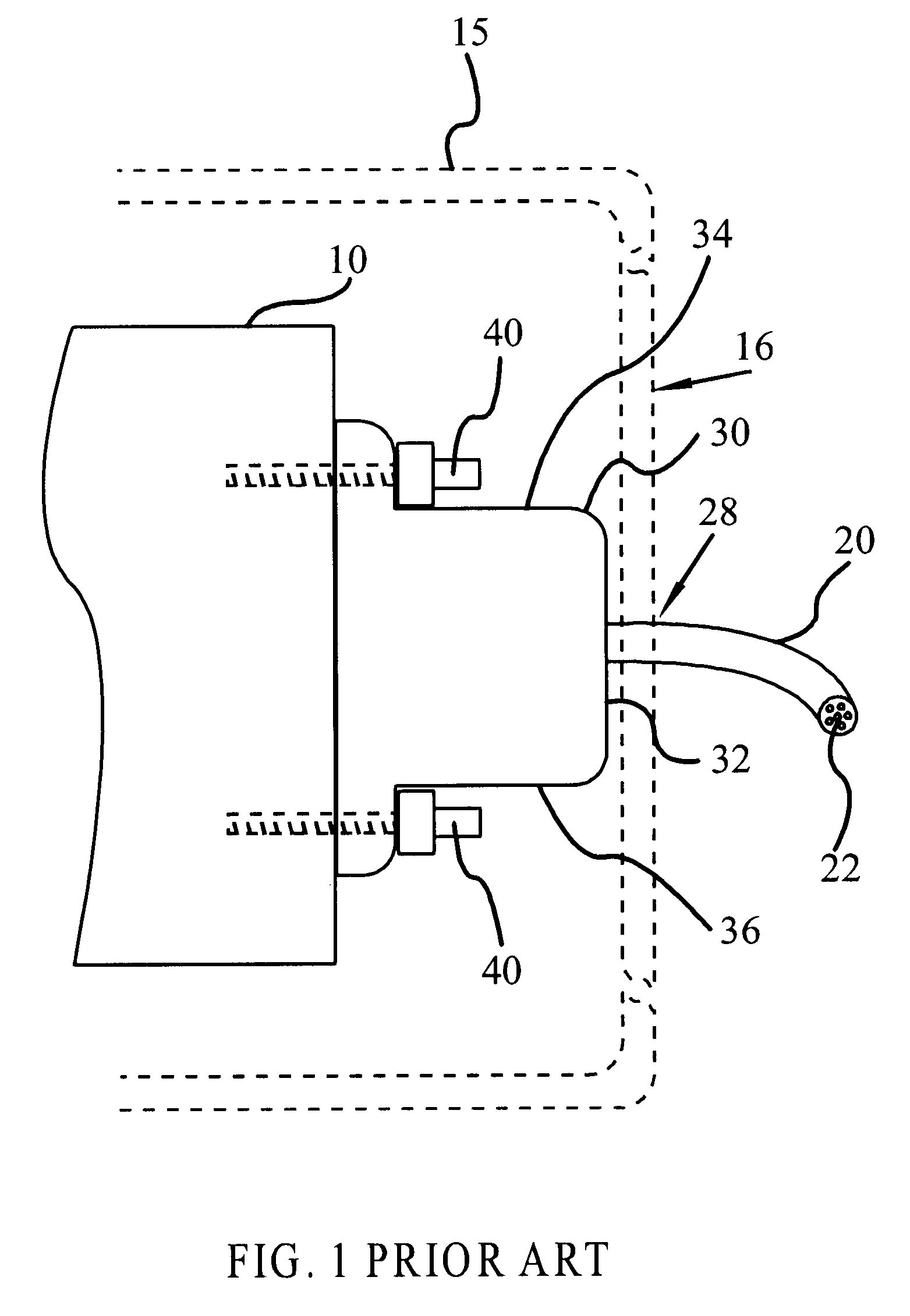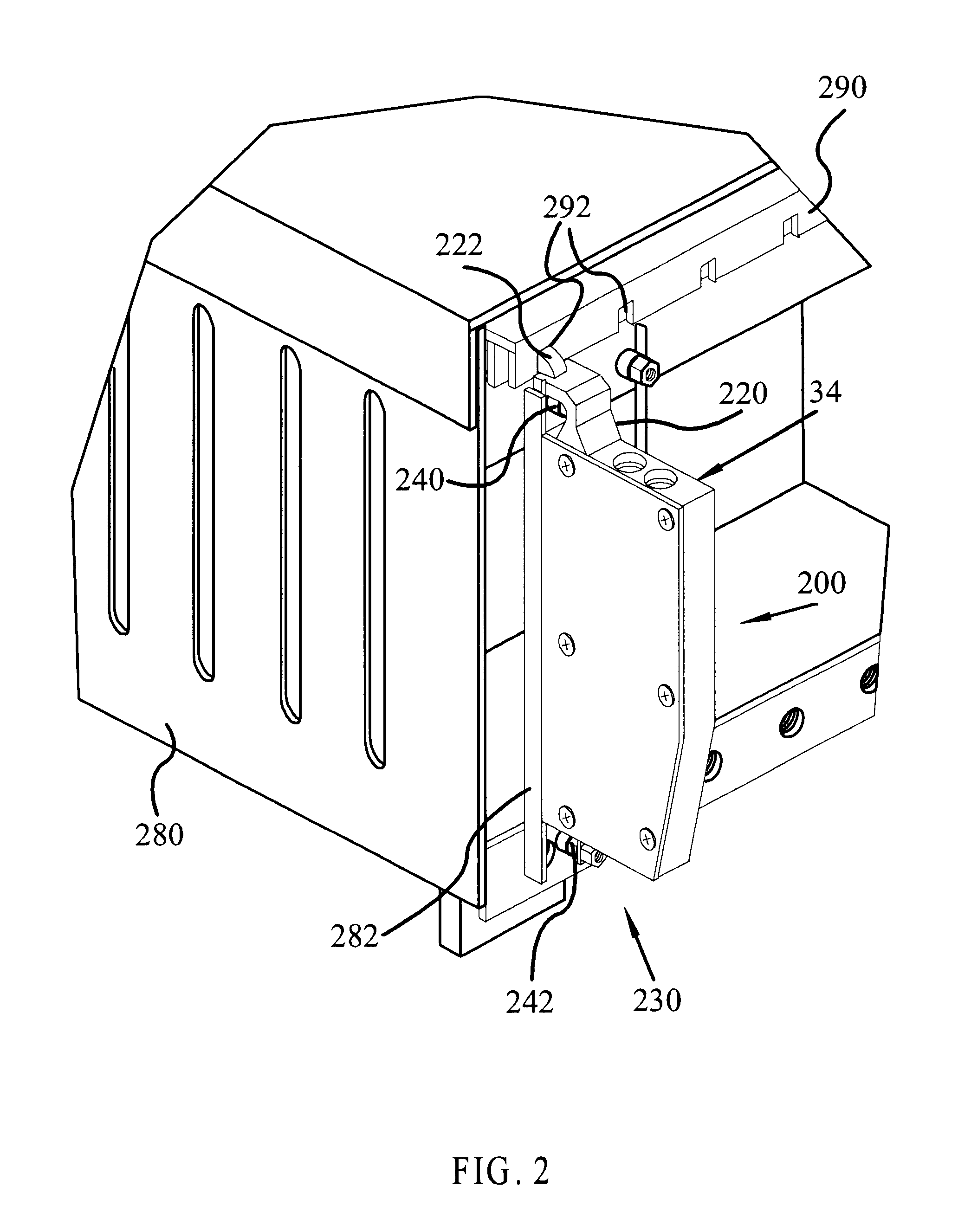Apparatus and method for using a backshell
a backshell and apparatus technology, applied in the direction of electrical apparatus, coupling device connection, support structure mounting, etc., can solve the problems of mechanical connection failure, permanent interruption of signals being transmitted, distorting or destroying signal integrity, etc., and achieve the effect of strong mechanical connection
- Summary
- Abstract
- Description
- Claims
- Application Information
AI Technical Summary
Benefits of technology
Problems solved by technology
Method used
Image
Examples
Embodiment Construction
An apparatus and method for using the apparatus in accordance with various aspects of the present invention provide an improved electrical signal connection for avionics related backshells. In this regard, the present invention may be described herein in terms of functional block components and various processing steps. It should be appreciated that such functional blocks may be realized by any number of components configured to perform the specified functions. For example, the present invention may employ various magnetic radiation grounding techniques, such as Deutsch grounding blocks, lug terminations, Tag Rings, and the like. Tag Ring is a brand name for a 360 degree EMI shield produced by Glenair. Furthermore, a variety of mechanical fasteners may be used to secure a backshell to a cabinet. Such general components that are known to those skilled in the art are not described in detail herein. It should further be understood that the exemplary process or processes illustrated may...
PUM
 Login to View More
Login to View More Abstract
Description
Claims
Application Information
 Login to View More
Login to View More - R&D
- Intellectual Property
- Life Sciences
- Materials
- Tech Scout
- Unparalleled Data Quality
- Higher Quality Content
- 60% Fewer Hallucinations
Browse by: Latest US Patents, China's latest patents, Technical Efficacy Thesaurus, Application Domain, Technology Topic, Popular Technical Reports.
© 2025 PatSnap. All rights reserved.Legal|Privacy policy|Modern Slavery Act Transparency Statement|Sitemap|About US| Contact US: help@patsnap.com



